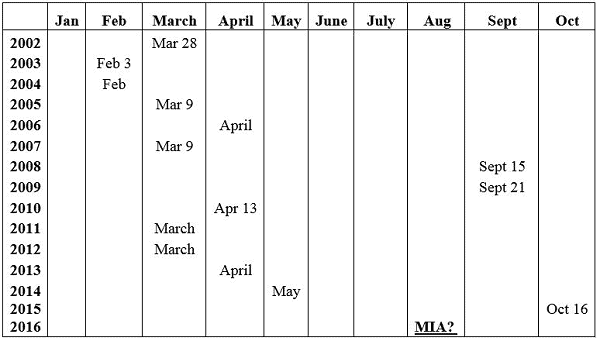Federal Register Tops 50,000 Pages, Yet Obama’s Report to Congress Is MIA

 The annual Report to Congress on the Benefits and Costs of Federal Regulations and Unfunded Mandates on State, Local, and Tribal Entities is quite overdue.
The annual Report to Congress on the Benefits and Costs of Federal Regulations and Unfunded Mandates on State, Local, and Tribal Entities is quite overdue.
It is the federal government’s only report disclosing overall costs and benefits of federal regulations.
How is it that the federal government meanwhile has no trouble issuing new regulations? Today the Federal Register topped 50,000 pages for 2016. That is a record pace.
Last year’s 2015 Draft, appearing on October 16, was the latest ever, as we’ll see in a moment in the chart below. The Final 2015 report didn’t appear until March 10, 2016.
This is 2016, and Monday it will be August. Where is the Draft 2016 Report to Congress on the Benefits and Costs of Federal Regulations in this “most transparent administration in history”?
There was an oversight hearing of the Office of Information and Regulatory Affairs in early July (Assessing the Obama Years: OIRA and Regulatory Impacts on Jobs, Wages and Economic Recovery). That’s the White House Office of Management and Budget body in charge of the report.
I testified at the hearing (here are oral and written comments), yet I was surprised when no one asked where the report was. There’d been lots of handwringing about “midnight regulations” but I’m here to tell you rules and “guidance documents” are still flying out of the administration. The Consumer Financial Protection Bureau just published new guidance yesterday on payday and title loans along with a fat rule last week.
Each year, concerned parties may comment on the Draft report before a final report is issued.
Like prior years’ reports, the Draft Report would give us a ten year lookback, in this instance covering October 1, 2005 to September 30 2015, and detail on the fiscal year ending September 30, 2015.
That is, alas, nearly a year ago. The final 2015 report we got in March covered rules from October 1, 2013 to September 30, 2014, which means information we have is nearly two years old. Yet Democrats at the hearing just knew that regulations all do good things.
The chart below shows the month (and day of the month if available) during which the Draft Report to Congress has appeared since 2002. The report has appeared most frequently in March (that was four months ago), and usually by April at the latest.
The Draft report is still MIA as of July 29.

As noted, last year’s was the latest ever. The two prior latest dates (the “Septembers”) in which the draft report appeared are interesting.
The first was during 2008, George W. Bush’s final year. His lateness could be due to the aforementioned “midnight regulations” phenomenon, which is bipartisan; presidents want to push their stuff through as their term ends. But the rules in Bush’s report are from an earlier fiscal year, so a real reason for delay isn’t clear.
During Obama’s first year (2009), the Draft Report also didn’t appear until September, even later in the month than Bush.
Obama’s delay then could perhaps be partly explained by the freeze he issued on Bush’s pending regulations on his first day in office, which was not a bad thing. Rules usually flow at the rate of over 3,500 annually, but are rarely phased out.
But, as a going concern administration rather than at a point of transition between opposing political parties occupying the White House, it is unheard of for the Draft Report to Congress on regulatory costs and net benefits to be as late as it was last year, and as it is now.
Surely when no crisis atmosphere prevails, it is not too much to ask that the public and Congress should get more timely reports on both regulatory priorities (the administration is also often late with its Unified Agenda regulatory planning documents) and the costs of those most recently issued, as the Draft Report reveals.
As the chart makes clear, we always have had more timely reports before this administration.
Meanwhile, the Administration has lost no opportunity to tout the alleged benefits of its regulations, even though it foot-drags when it comes to reporting about them.
In the final 2015 Report, the administration maintained that the period’s rules bestowed benefits of up to $22 billion, noting that costs were about $4 billion.
But this claim is made on the basis of only thirteen rules featuring cost benefit analysis during the 2014 fiscal year, out of thousands of rules that are issued by agencies each year. This is not credible, and obscures more than it reveals about the regulatory enterprise.
One can hope that the 2016 Draft Report will cover more ground. When we get it.